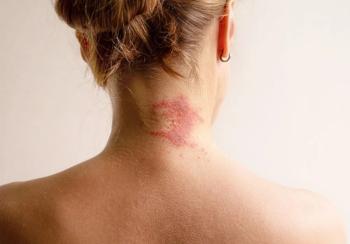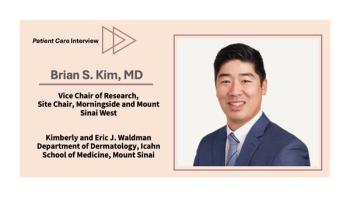
ACP 2025. A quick look at 2 topics in dermatology rounded out a Multiple Small Feedings of the Mind session at the 2025 American College of Physicians annual meeting.

ACP 2025. A quick look at 2 topics in dermatology rounded out a Multiple Small Feedings of the Mind session at the 2025 American College of Physicians annual meeting.

ACP 2025. Ruth Etzioni, PhD, discussed evidence-based approaches to screening for patients at average risk, start and stop criteria, MRI for follow-up screening, and other topics.

In a new position paper, the ACP calls for policy action to address rural health disparities, improve access to care, and strengthen the rural health care workforce.

ACP 2025: Irl B Hirsch, MD, reviewed findings from 8 papers published in 2024 that he believes have made or will make a difference in the practice or understanding of the clinical area.

ACP 2025. Thomas Martens, MD, Gregg Simonson, PhD, and Libby Johnson, RDN, LD, CDCES explained the benefits of CGM, how to interpret data, and then adjust treatment accordingly.

Highlights from AAD 2025: Experts share updates on systemic therapy for atopic dermatitis, pediatric rashes, and contact dermatitis for PCPs.

Your daily dose of the clinical news you may have missed.

Your daily dose of the clinical news you may have missed.

Your daily dose of the clinical news you may have missed.

For the same level of baseline health, the increase in risk related to each of 8 key CV risk factors appears significantly higher in women than in men.

AAD 2025: Raj Chovatiya, MD, PhD, MSCI, well-known physician scientist, says underrepresentation in clinical trials of those with skin of color precludes an evidence-based answer.

Raj Chovatiya, MD, PhD, MSCI, discusses the complex and widely variable influences that affect the manifestations and burden of atopic dermatitis across populations.

AAD 2025: Chovatiya discusses whether melanin concentration plays a role in skin physiology and cautioned against typing with factors that are not true biologic constructs.

Your daily dose of the clinical news you may have missed.

Your daily dose of the clinical news you may have missed.

Chovatiya, expert clinical dermatologist and researcher, points out that the term "skin of color" comprises a heterogenous set of topics, in an interview at AAD 2025.

In an interview at AAD 2025, Katrina Abuabara, MD, stressed the importance of collaboration between primary care physicians and dermatologists.

Antihistamines for itch caused by disorders like atopic dermatitis pose more problems, like sedation and fall risk, than they provide relief, according to Daniel Butler, MD.

Elizabeth Swanson, MD, shares how the rise of T.indotineae, a terbinafine-resistant fungal species, has shifted her treatment approach.

Your daily dose of the clinical news you may have missed.

AAD 2025: Tracing the multiple pathways that contribute to chronic itch vs looking for a singular cause helps optimize choice of therapy, Butler says.

Shingles is increasingly being observed in healthy, immunocompetent children. Elizabeth Swanson, MD, discusses how to recognize and respond.

Dr Swanson discusses the resurgence of measles and emphasizes the safety and efficacy of the measles vaccine.

Dupilumab-treated participants with recalcitrant head and neck symptoms who were switched to upadacitinib rapidly reached EASI 75 and steadily improved, among other findings.

Your daily dose of the clinical news you may have missed.

Elizabeth Swanson, MD, discusses the changing face of HFMD, focusing on the increasingly prevalent coxsackievirus A6 strain and its unique characteristics

In an interview at AAD 2025, Dr Yu emphasized the importance of managing contact dermatitis early and effectively to prevent long-term complications.

Brian S Kim, MD, a leading investigator in the study of itch physiology, discusses the marked progress made in understanding the sensation and targeting its treatment.

The impact of childhood onset AD on adult psychosocial experience, including employment and the decision to become a parent, is profound, this study reveals.

Highlights include new data on roflumilast cream 0.15%, an investigational anti-OX40 ligand monoclonal antibody, and more.